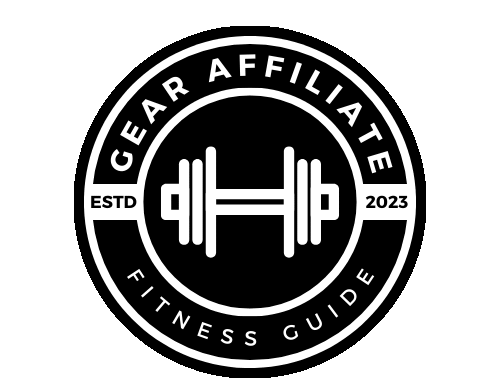
Understanding Strength Training
Strength training is a systematic method of exercising that aims to enhance the maximum force output of muscles. This approach focuses on lifting heavier weights with lower repetitions, which is designed to stimulate muscle growth and improve overall physical performance. The primary goal of strength training is to develop strength, power, and muscular endurance through targeted exercises, ultimately enabling individuals to perform daily activities and athletic endeavors with greater efficiency.
One of the most significant advantages of strength training is its capacity to improve athletic performance. By focusing on core lifts such as squats, deadlifts, and bench presses, individuals can develop the essential muscle groups required for various sports and physical activities. Additionally, strength training is known to enhance bone density, which is particularly important for individuals as they age. This results in stronger bones and a lower risk of fractures, promoting long-term health and well-being.
Furthermore, strength training plays a critical role in increasing metabolic rate. Engaging in resistance exercises stimulates muscle growth, leading to higher resting energy expenditure. This means that even when at rest, individuals who engage in regular strength training burn more calories compared to those who do not. The impact of strength training on metabolism makes it a vital component of any effective fitness regimen, particularly for those looking to manage their weight or improve overall body composition.
To effectively implement strength training, individuals often utilize specific rep ranges and methodologies. Generally, training within a range of 1-6 repetitions with heavier weights is ideal for building strength, while slightly higher rep ranges (8-12) can be effective for hypertrophy. Various training styles, including periodization and progressive overload, further enhance the efficacy of strength training, ensuring continuous adaptations and avoiding plateaus. By understanding these principles, individuals can tailor their workouts to better align with their fitness goals.
Exploring Hypertrophy Training
Hypertrophy training is a systematic approach to exercise that focuses on increasing muscle size through specific protocols of repetition and volume. The primary physiological mechanisms underpinning muscle hypertrophy include muscle tension, metabolic stress, and muscle damage. Each of these factors plays a significant role in stimulating the growth of muscle fibers, ultimately leading to enhanced aesthetic appeal and improved body composition.
Muscle tension is particularly crucial, as it is generated through lifting weights that are challenging for the muscles. When resistance is applied, muscles adapt to the strain, and with consistent training, the fibers grow bigger and stronger. Additionally, hypertrophy training typically involves moderate to high repetitions, often within the range of 6 to 12 reps per set. This rep range is optimal for muscle growth, enabling the muscles to experience enough tension and time under load to trigger hypertrophic adaptations.
Another vital component is metabolic stress, which occurs when muscles undergo prolonged activity without sufficient rest. This condition leads to the accumulation of metabolites, such as lactate and hydrogen ions, which contribute to the sensation of the “burn” during intense exercise. The presence of these metabolites can signal the body to promote growth factors that enhance muscle synthesis.
Furthermore, muscle damage, resulting from eccentric contractions where the muscle lengthens while under tension, is a critical factor in hypertrophy. This microtrauma repairs itself during recovery, leading to muscle growth. Typical exercises in a hypertrophy training regime include movements like bench presses, squats, deadlifts, and various isolation exercises that target specific muscle groups. To effectively optimize hypertrophy, practitioners often implement multiple sets, commonly ranging from 3 to 5, with a focus on achieving the desired volume for effective muscle adaptation.
Comparative Benefits of Strength vs. Hypertrophy Training
When considering a fitness regimen, understanding the comparative benefits of strength and hypertrophy training is essential, as each approach targets different physical outcomes. Strength training primarily focuses on increasing the maximum amount of force that muscles can exert. This method is especially beneficial for athletes and powerlifters whose primary goal is to enhance their performance in sports that require explosive power and superior functional strength. Strength training typically involves performing lower repetitions with heavier weights, promoting adaptation in the neuromuscular system that translates into increased force production.
On the other hand, hypertrophy training emphasizes muscle growth and size. This method is particularly popular among bodybuilders and individuals seeking to achieve a particularly toned physique. Hypertrophy is often accomplished through structured programs that involve moderate weights with higher repetitions, encouraging muscle fiber recruitment and metabolic processes that contribute to increased muscle cross-sectional area. As a result, individuals practicing hypertrophy training often experience more noticeable muscle definition and a sculpted appearance.
While strength and hypertrophy training may seem distinct, they can effectively complement each other. Those pursuing athletic or powerlifting goals can incorporate hypertrophy training into their routines to build muscle mass, which may support overall strength gains. Conversely, individuals who primarily focus on hypertrophy can benefit from incorporating strength training to enhance their strength levels, which aids in lifting heavier weights and contributes to muscle growth.
Ultimately, the choice between strength and hypertrophy training should be guided by personal fitness goals. Whether seeking to improve athletic performance, enhance aesthetic qualities, or achieve overall fitness improvements, understanding the synergistic relationship between these two methodologies can help individuals design a balanced training program that meets their unique needs efficiently.
Choosing the Right Approach for You
Determining the most suitable training approach—strength training or hypertrophy training—requires a thoughtful examination of your individual fitness goals, current physical condition, and personal workout preferences. The first step is to clearly define your specific objectives. Are you aiming to build maximal strength, increase muscle size, enhance athletic performance, or perhaps a combination of these? Understanding what you desire from your training will guide your decision-making process.
Your current fitness level plays a critical role in choosing the right training style. Beginners may benefit more from strength training due to its focus on foundational movements and form, which can enhance overall stability and reduce injury risk. Conversely, those with an existing fitness foundation may find that hypertrophy routines align better with their muscle-building objectives. Assess your capabilities honestly; if you are unsure, it can be helpful to consult with a fitness professional who can evaluate your strengths and weaknesses.
Workout preferences also deserve consideration. Strength training, characterized by lower repetitions and higher weights, typically requires longer rest periods, while hypertrophy training often involves moderate weights with multiple repetitions and shorter rest intervals. Reflect on your enjoyment of particular types of workouts; consistency is key to achieving your goals, and engaging in a training style you enjoy will help maintain adherence over time.
It’s important to note that these approaches are not mutually exclusive. Many individuals can benefit from integrating both strength and hypertrophy training into their routines. This hybrid model can lead to superior muscle development, as it encompasses the advantages of each method. Experimenting with various combinations may yield the best personal results, allowing you to adapt as you progress in your fitness journey.
In conclusion, the right approach to training depends on a careful analysis of individual goals, fitness levels, and preferences. By exploring both strength and hypertrophy training, you can establish a balanced regimen that promotes continual progress and enjoyment in your workouts.
If you found this post to be helpful, then you may be interested in the rest of our blog page here.
At Gear Affiliate, we always want to give our readers more resources to research. Below are a few sources that we have found to be helpful relating to this topic.


